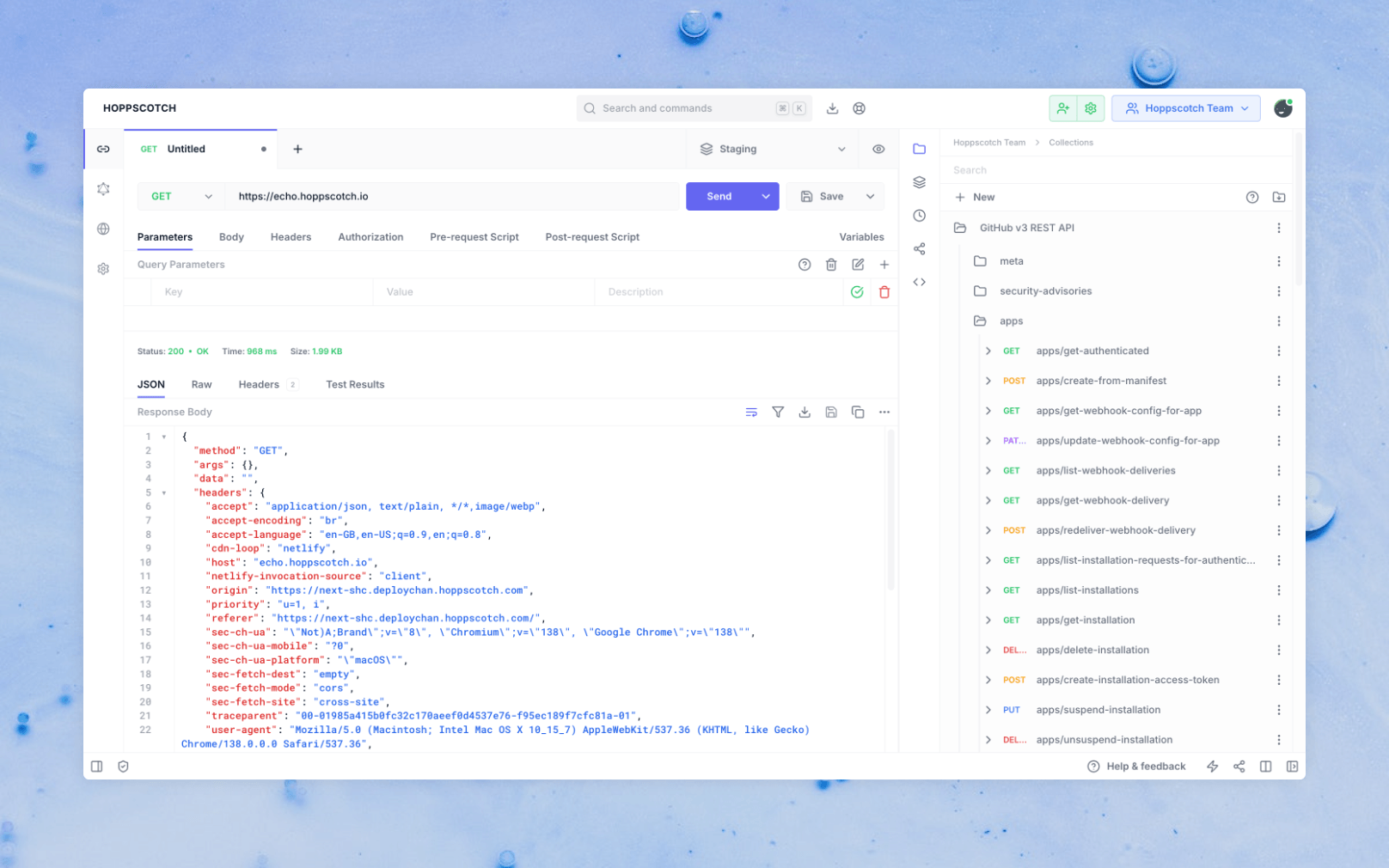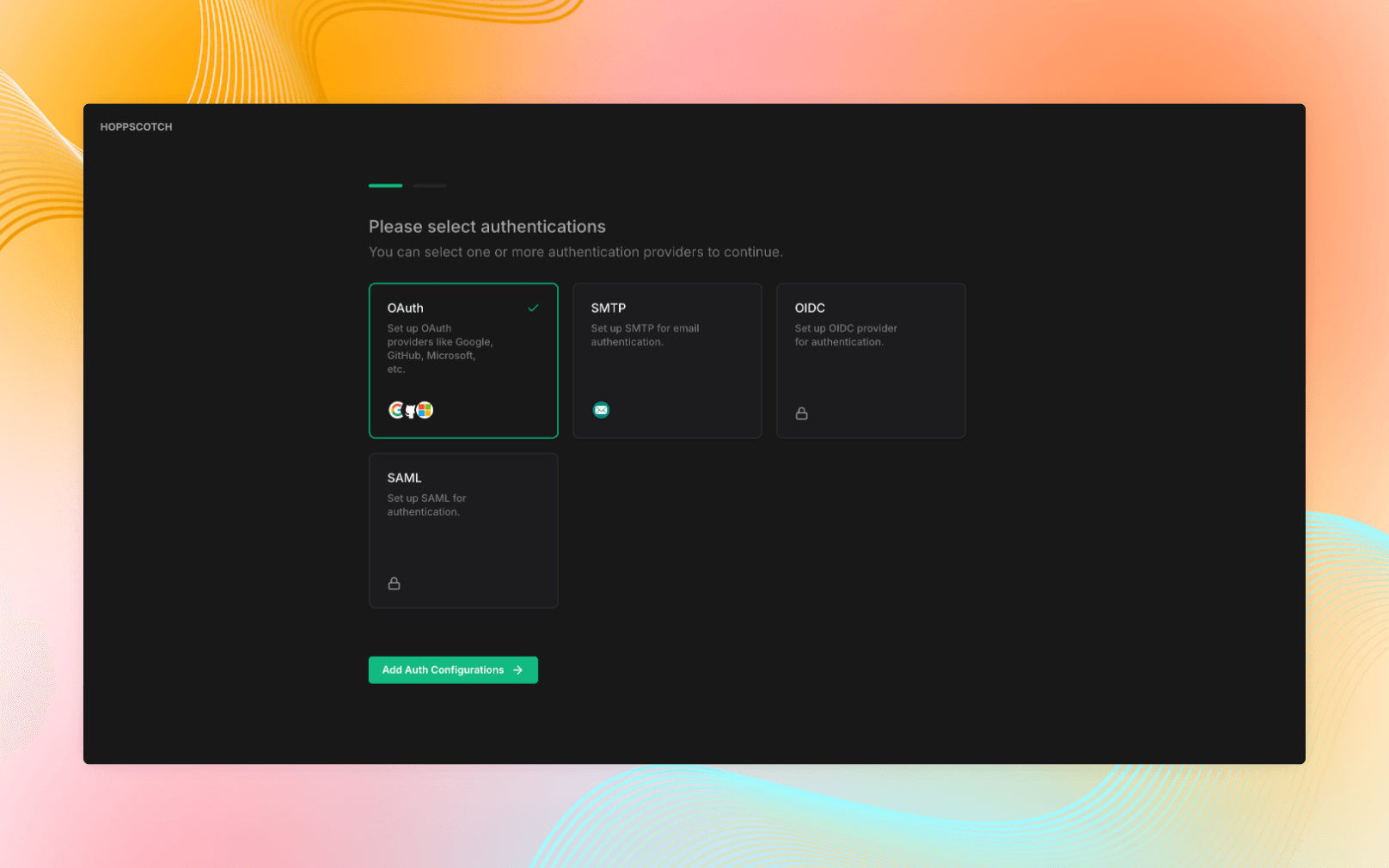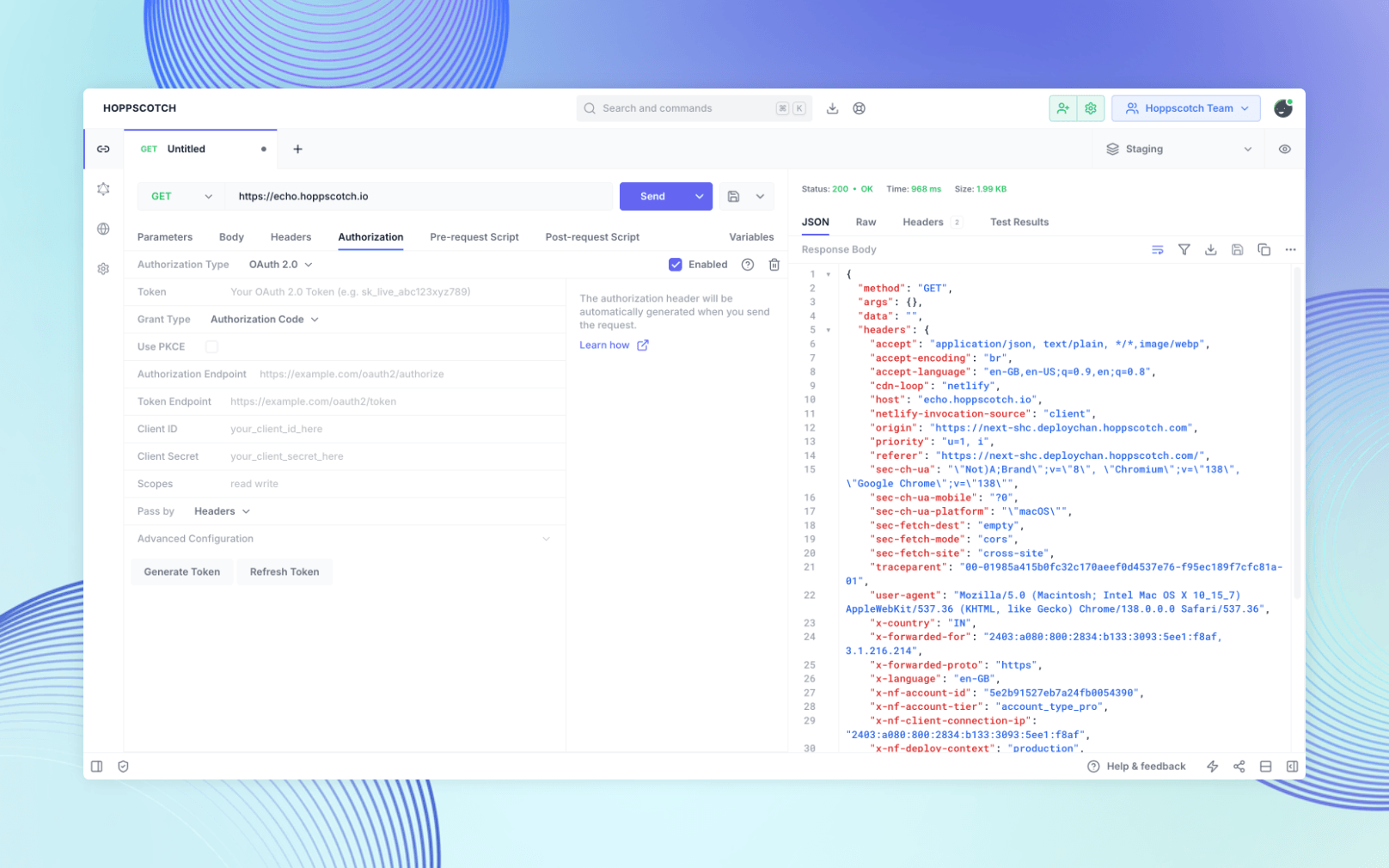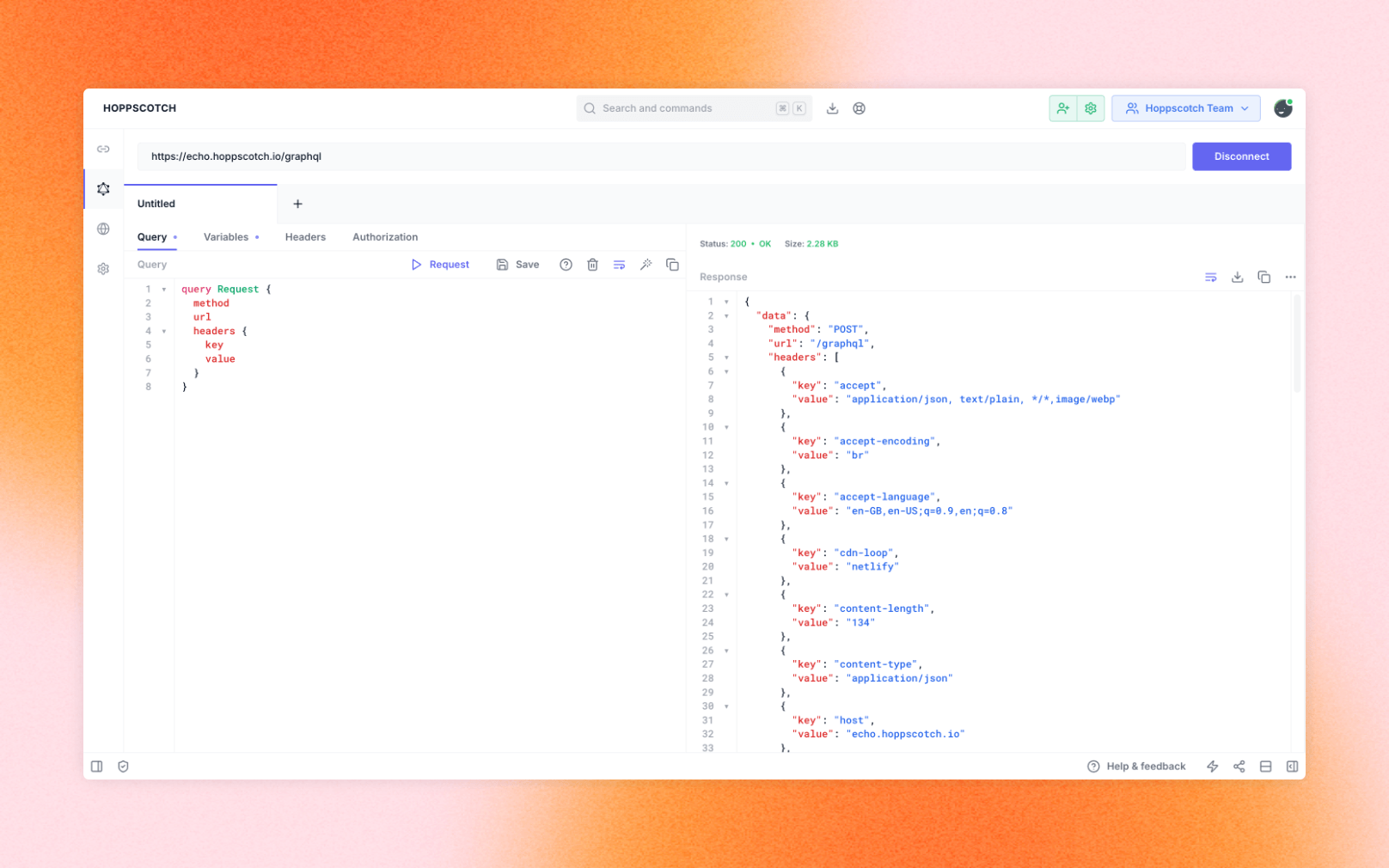- Product |Jul 30, 2025
Hoppscotch v2025.7.0: Improved Self-Hosted Onboarding Flow, Authorization Panel UI and more

We're excited to announce the release of Hoppscotch v2025.7.0, which includes significant improvements to the self-hosted onboarding flow, a revamped authorization panel UI and an experimental scripting editor.
Improved Self-Hosted Onboarding Flow
The self-hosted onboarding flow has been revamped to provide a smoother and more intuitive setup experience. This update simplifies the initial configuration process, making it easier for users to get started with their self-hosted instance.

The new onboarding flow includes:
- Default Values: Many environment variables now have an default value that is set automatically during the onboarding process.
- Authentication Methods: The onboarding flow now includes options for configuring authentication methods, such as OAuth2 and API keys, to streamline the setup process.
Revamped Authorization Panel UI
The authorization panel UI has been redesigned to provide a more user-friendly experience. The new design makes it easier to manage and configure authorization settings for your API requests.

Input fields for authorization methods have been streamlined, making it easier to enter and manage credentials. The new design also includes improved labels and tooltips to help users understand the purpose of each field.
Experimental Scripting Editor
Hoppscotch v2025.7.0 introduces an experimental scripting editor based on the Monaco Editor. This new experience comes with a variety of features, including syntax highlighting, code completion and debugging tools, making it easier to write and test scripts within Hoppscotch.

This feature is still in development and we welcome feedback from the community to help shape its future. You can opt-in to the experimental scripting editor from the Settings page > Experiments > Experimental Scripting Sandbox.
Status Code and Additional Metadata in GraphQL Responses
In this release, we've added support for status codes and additional metadata in GraphQL responses. This enhancement allows users to better understand the results of their GraphQL queries and handle errors more effectively.

The status code and metadata are now included in the response status code, providing valuable information about the success or failure of the request, response size and other relevant details. This feature is particularly useful for debugging and troubleshooting GraphQL queries.
Minor Bug Fixes and Improvements
In addition to the major features, we've also made several minor bug fixes and improvements to enhance the overall performance and stability of Hoppscotch.
- Encoded Characters in URL: Fixed an issue where encoded characters in the URL were not being handled correctly.
- Media-Type in HTTP Request: Fixed an issue where the media-type in the HTTP request was not being set correctly.
- Email Validation: Added email validation while updating the email from the profile page.
- Audience Attribute in OAuth2 Flows: Added the audience attribute to OAuth2 flows to improve compatibility with various authentication providers.
- Preserve Response Viewer Scroll Position: Improved the response viewer to preserve the scroll position per tab, making it easier to navigate through large responses.
- Tooltip Theme Updates: Updated the tooltip themes to provide a more consistent and visually appealing experience.
In addition to these new features, we've also made several bug fixes and improvements to enhance the overall performance and stability of Hoppscotch.
What do you want us to build next? Write to us at hello@hoppscotch.io, join the conversation on our Discord server, or head over to our GitHub repository.